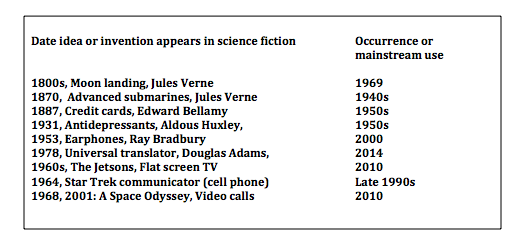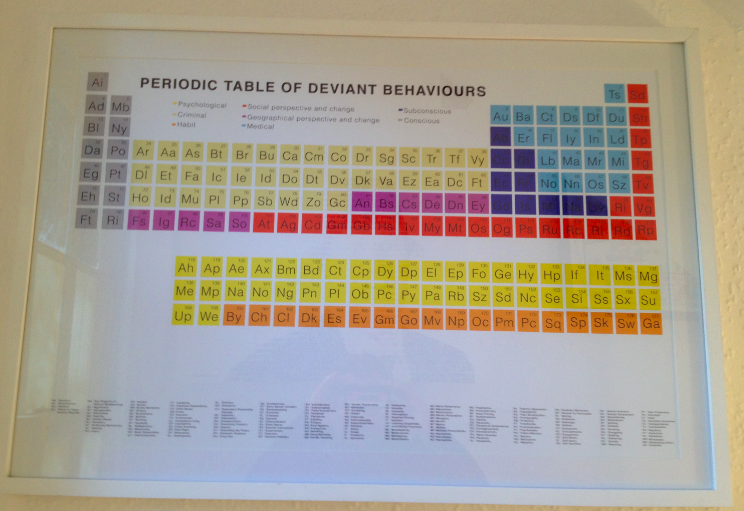How Ideas Happen
Here’s a perfect example of how random events combine to create ideas and insights. I’ve been writing something about whether or not forecasting the future is futile or functional. It’s been a disaster. It jumps around, it doesn’t flow and I’m not really sure what the key thought is. I’ll persist for a while, but my prediction is that it’s heading for the wastebasket.
At about the same time as writing this piece I was at Imperial College and visited the science fiction library. Nothing dramatic, although the experience sparked off a thought about the extent to which science fiction influences invention. If you took a long enough time period would sci-fi writers prove to be better than futurologists at predicting the future? This didn’t really go anywhere initially, although a couple of lines in my piece did reference this thought and I had the idea of a call-out box (above) showing a couple of ideas in science fiction that became science fact.
A week later I’m at Imperial again and it suddenly hit me that you could create a rather wonderful graphic showing the connections between imagination and invention. With enough examples (50?, 100?) you could possibly make an interesting point about the time lag between speculation and appearance. For example, is the time between these two points getting shorter?
Very rough pencil sketch to come….


